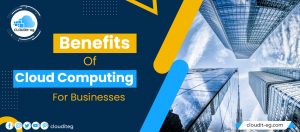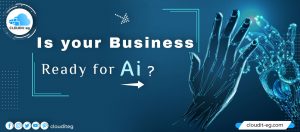The advent of the IT Cloud has provided companies with new ways to manage their IT infrastructure. Different possibilities are now available to them, from keeping their IT assets within the company, with physical workstations that they manage and monitor themselves with the help of internal teams, to virtualization workstations, making it possible for any employee to work from any machine, with minimal maintenance or downtime.
The solution to choose does not always impose itself. It often requires a reflection on the part of the manager or leader in order to establish possible means of rationalizing or improving IT cost management, ideally while allowing the company to remain innovative and competitive.
In this article, we want to shed some light on what IT costs represent, and on the different levers, you have to optimize their management.
IT: cost center or value creation?
This question is important in deciding how the IT budget is approached within the company. Indeed, is the objective to minimize costs? Maximize efficiency? Or to seek innovation?
IT has a central place in the operation of the company. It improves the quality of the service provided to the customer, and thereby customer satisfaction, but also the quality and efficiency of the work accomplished by employees, the ability for teams to collaborate, to be flexible, or the possibility for the company to bounce back from opportunities and innovate.
Therefore, it seems reductive to confine the objective of the IT budget to a simple cost limitation, since the information system directly participates in the success of the company’s project.
A clear idea of IT cost centers
The problem with calculating business IT costs is that there are obvious costs, but more importantly, a number of hidden costs.
What should be included in the calculation of your IT costs?
Obvious costs
- The purchase of positions for each employee (one-off)
- The purchase of servers (one-off)
- Purchase of licenses (one-off)
- The implementation of reliable and lasting backup solutions for data, emails, programs (one-off)
- The employment of one or more collaborators to maintain the computer park (recurring)
Less obvious costs
- The service of the various equipment in time (recurring)
- Renewal of obsolete positions and expired licenses (approximately every 3 to 5 years)
- The resources needed to operate the equipment (electricity: employee and server workstations) (recurring)
Hidden costs
- Costs related to breakdowns, incidents, data loss, temporary shutdowns of the activity
- Maintaining equipment in safe conditions in the face of increasing IT threats (procedures, adaptations to new regulations, training)
- Maintaining equipment in innovative conditions in the face of competition and equipment obsolescence (watch, research, training)
- The time spent in human resources and recruitment with employees of the IT department
To calculate your IT costs over one or more years, you have to estimate the quantities needed by your business for each of these fields, and multiply them by the time over which you want to estimate the calculation (1 year, 2 years, 3 years, etc.)
You can then simply divide the total by the number of your employees, to obtain the cost of your IT per employee workstation.
IT costs and outsourcing
After going through the elements in this article, you now have a better idea of your estimated IT costs per job for your business. This is when it becomes interesting to consider the new IT maintenance, hosted services, and IT fleet management offers now available in the age of Cloud Computing.
Indeed, the offers offered by IT service companies have the particularity of being based on the Cloud model, that is to say, with a payment on consumption, generally monthly or annualized. In other words, it becomes easy to compare the company’s offer with the estimate of your costs and to define if the outsourcing of the management of your IT, or even, the outsourcing of the material itself, is interesting for your business.
The advantages of this type of outsourced offer are numerous:
- Capex vs Opex: you realize the operating expenses, not capital expenditure capital
- Easy to calculate and evaluate your expenses, which are fixed, monthly, or annual and without surprises
- Flexibility to increase or decrease your IT capacities, according to the conditions set by the service provider, without being limited by the need to invest (you just need to inform the service provider of your wish to boost or reduce your offer)
- The sharp and expert skills to give your enterprise innovation capacity and optimum efficiency



